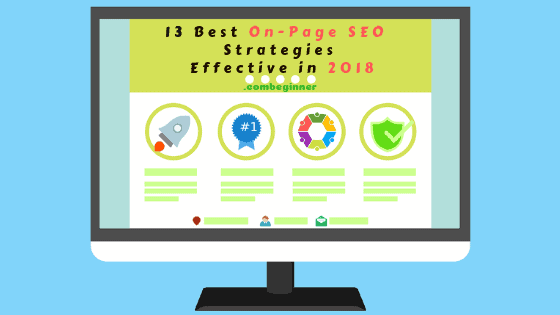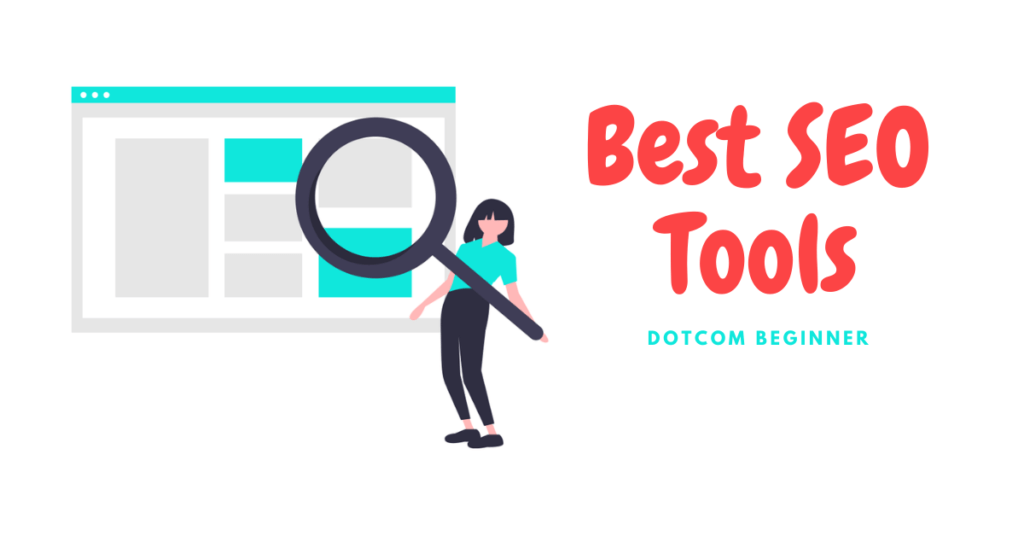Last Updated on January 14, 2023
As we enter the new year, it’s more important than ever for businesses to have a strong online presence. With more and more people turning to the internet to research products and services, it’s crucial to make sure your business is visible and easily found. That’s where search engine optimization, or SEO, comes in.
SEO involves making changes to your website and its content so that it shows up higher in search engine results and attracts more traffic. By using SEO best practices, you can make your site more visible and build trust with people who might buy from you. This can lead to more business and more revenue for your company.
As you plan your SEO strategy for the coming year, setting realistic goals is essential. Think about what you want to achieve, whether it’s more website visitors, higher search engine rankings for specific keywords, or more leads and sales.
Following the tips and strategies outlined in this guide can take your SEO efforts to the next level and achieve your business goals. So, let’s get started on improving your online presence.
🌟 Strategy #1: Conduct thorough keyword research
Conducting thorough keyword research is an essential aspect of any successful SEO strategy. By understanding the words and phrases that potential customers use to search for products or services like yours, you can tailor your website and its content to rank higher in search engine results.
Many tools, like the Google Keyword Planner and SEMrush, can help with keyword research. You can put in a seed keyword to get a list of related keywords, how often people search for them, and information about how competitive each keyword is.
It’s also beneficial to consider using long-tail keywords and latent semantic indexing (LSI) keywords. Long-tail keywords are phrases that are more specific and usually have less competition. They can help you get more targeted traffic. LSI keywords are related words that help search engines figure out what your content is about and how it fits into the world.
You can improve your search engine visibility and get more qualified traffic by doing in-depth keyword research and using a mix of standard, long-tail, and LSI keywords in your website and content.
🌟 Strategy #2: Optimize title tags and meta descriptions
When it comes to optimizing your website for search engines, title tags and meta descriptions are two key elements that can’t be ignored. These elements help search engines understand your webpage and how it should be displayed in the search results. By making sure your title tags and meta descriptions are well-written, you can increase the number of people who click on your website in the search results.
Title tags should be short and sweet, ideally 60 characters or less. Make sure to include your main keyword in the title tag. You can also use modifiers like “best,” “review,” or “guide” to make your title more appealing and relevant to the person searching. Sometimes, using emojis in your title can also help it stand out in the search results.
Meta descriptions are brief summaries of your page’s content that appear under the title in the search results. They should be written in a way that entices people to click on your result and also include your main keyword. Keep it concise—around 160 characters or less—and ensure it accurately reflects your page’s content.
By following these guidelines for title tags and meta descriptions, you can increase your click-through rate and drive more qualified traffic to your website.
🌟 Strategy #3: Improve site speed and mobile-friendliness
A fast and mobile-friendly website is crucial for success in today’s digital age. Slow loading times and a website that isn’t set up for mobile devices can make people leave your site and hurt your search engine rankings. To ensure that your website is running at its best, it’s important to regularly test and improve your site speed and make sure it is responsive and mobile-friendly.
Tools like Google PageSpeed Insights and GTmetrix can help you find places to improve, like optimizing images and reducing the number of redirects. If you make these changes, the user experience will be much better, which will lead to lower bounce rates and more engagement. Also, Google likes websites that work well on mobile devices, so optimizing for mobile can also help your search engine rankings.
In conclusion, if you pay attention to your site’s speed and how well it works on mobile devices, you can improve your search engine rankings, get more people to use your site, and make sure it can reach its full potential.
🌟 Strategy #4: Create and optimize unique, high-quality content
Unique and high-quality content is a vital aspect of any SEO strategy. By making content that is useful and relevant on a regular basis, you can increase organic traffic to your site, improve your search engine rankings, and make your business an authority in your field.
To make a good content strategy, it’s important to do research on the topics and make an editorial calendar. This means figuring out what your audience cares about and making a plan for when to post content about those things.
In addition to making good content, it’s essential to make sure search engines can find it. This includes using header tags (such as H1, H2, etc.) to structure your content and make it easier for search engines to understand, as well as using internal linking to help search engines crawl your site and understand the relationship between your pages.
By creating unique, high-quality content and optimizing it, as well as using header tags and internal links, you can make your site more visible to search engines and get more qualified traffic to it.
🌟 Strategy #5: Build high-quality backlinks
When it comes to SEO, backlinks are like gold. They’re links from other websites that point to your site and act like a vote of confidence for your site. The more high-quality backlinks you have, the better your site will rank in search engines.
There are two types of backlinks: dofollow and nofollow. Dofollow links pass along “link equity,” which can help your search engine rankings, while nofollow links don’t pass along link equity and are usually used for linking to sites that can’t be trusted or are spammy.
There are a few ways to get high-quality backlinks for your website. One way is by creating valuable and shareable content that other websites will want to link to. Another way is to reach out to other websites and bloggers in your industry and ask for a link. Joining online communities and forums related to your business and putting a link to your website in your signature or profile can also help.
It’s important to remember that not all backlinks are created equal. It’s better to have a few high-quality backlinks from reputable websites than a lot of low-quality backlinks from spammy sites. These low-quality backlinks can actually harm your search engine rankings, so it’s important to be selective when building links.
🌟 Strategy #6: Utilize social media to amplify your content
When it comes to promoting your business and website, social media is a powerful tool. By sharing your content on platforms like Instagram, Facebook, and Twitter, you can reach a wider audience and increase awareness of your brand. However, it’s important to understand the unique characteristics of each platform and use them to your advantage.
For example, Instagram is great for visually stunning content like images and videos, while Twitter is best for shorter, text-based posts. Also, it’s important to keep track of your progress and measure your social media efforts’ return on investment (ROI). By keeping an eye on metrics like website traffic and conversions, you can see what’s working and make adjustments as needed.
🌟 Strategy #7: Make use of local SEO techniques
If you’re a local business, it’s important to make sure that you’re doing everything you can to optimize your online presence for local search results. This is where local SEO comes into play.
One of the most important things you can do to improve your local SEO is to make sure that your Google My Business listing is set up correctly. This means double-checking that your business’s name, address, and phone number (NAP) are correct and consistent across the web. You can also add photos, reviews, and relevant categories to your listing to help potential customers learn more about it.
Another important aspect of local SEO is including your NAP information on your website. By including your business name, address, and phone number on your website, you’re letting search engines know that your business is local and relevant to people in your area.
🌟 Strategy #8: Utilize voice search optimization
To make your website and content work well with voice search, you should do a lot of keyword research to find out what kinds of questions and queries people are likely to ask when using a virtual assistant. This can help you add relevant phrases and long-tail keywords to your content to make it easier to find in voice search results.
In addition to using relevant keywords, it’s important to write in a conversational style to make voice search more natural. This involves using language and phrasing that feels natural and aligns with the way users might ask a question out loud. By making content that sounds more like a conversation, you can improve the user experience and make your content more likely to be chosen.
🌟 Strategy #9: Experiment with video content
If you’re looking for a way to connect with your audience and drive more traffic to your website, adding video to your marketing plan is definitely worth considering. Optimizing your video content for SEO can make it more visible in search results and increase the chances that potential customers will find it.
To optimize your video for SEO, you should follow a few best practices. For example, make sure to include a keyword-rich title and description for your video and add closed captions and transcripts to make your video more accessible. Also, it’s important to use SEO best practices like header tags and internal links to help search engines understand what your content is about.
Overall, experimenting with video content and following best practices for optimization can help you improve your search engine rankings and bring more qualified traffic to your website.
🌟 Strategy #10: Utilize structured data and schema markup
Structured data is a great way to tell search engines about your content’s context and relevance and make your website more visible in search results. By using structured data and schema markup, you can help search engines understand what your page is about, which can lead to higher rankings and more qualified traffic.
Schema markup is the process of adding certain tags to your website’s HTML code to provide more information about your content. There are many different types of schema available, such as product, event, and recipe schema. Luckily, you can use tools like Google’s Structured Data Markup Helper to add schema to your website easily.
By using structured data and schema markup, you can help search engines understand what your website is about and make it more visible in search results. This can help you get more qualified visitors to your site, which could boost your online presence and income.
🌟 Strategy #11: Monitor and track your SEO efforts
Monitoring and keeping track of your SEO work is an important part of any SEO strategy that works. Tools like Google Search Console and SEMrush can help you keep track of your search engine rankings and find places where you can improve.
Tracking your rankings is important, but it’s also important to look at your traffic and conversions to see how well your efforts are going. This means knowing which traffic sources bring the most qualified users to your site and which pages have the highest conversion rate. By looking at this data, you can improve your strategy and focus more attention on the tactics that are working best.
By consistently monitoring and tracking your SEO efforts, you can stay up-to-date on the latest trends and techniques and make informed decisions about how to improve your strategy.
✍🏽 Conclusion
SEO is an important part of digital marketing that helps businesses improve their search engine rankings and get more qualified traffic to their websites. To do this, businesses use strategies like researching keywords, optimizing titles and meta descriptions, making sites faster and more mobile-friendly, creating and optimizing high-quality content, building backlinks, promoting on social media, using local SEO techniques, optimizing for voice search, experimenting with video content, using structured data and schema markup, and tracking and monitoring their progress.
It’s important for businesses to stay up to date with the latest SEO trends and techniques to ensure that their online strategy is effective and continues to drive results.





